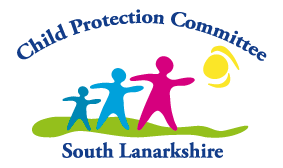Latest News
Capacity, consent and compulsion for young people with borderline personality disorder
Published: Thursday, 03 October 2019
New guidance for professionals working with young people with a diagnosis of borderline personality (BPD) has been published
A new good practice guide for professionals working with young people with a diagnosis of borderline personality disorder (BPD) has been published today by the Mental Welfare Commission. The guide focuses on the crucial issue of a young person’s capacity to make decisions when they are unwell or in serious distress, and how that affects the ability of health and social work professionals to best treat that young person. This can be a very challenging area to judge accurately, and the new guide discusses the difficulties and dilemmas around issues ranging from whether or not a hospital admission may be appropriate, to the possible use of compulsory treatment. It emphasises the need to balance the importance of promoting a collaborative relationship between the patient, clinicians and service, whilst managing the risks.
Colin McKay, chief executive, Mental Welfare Commission, said:
“We have been aware of the difficulties professionals sometimes face in getting treatment decisions right for young people with this diagnosis. For example, compulsory treatment may be necessary for the patient’s safety, yet may also harm the relationship between patient and staff and longer term therapeutic goals. We are also aware of the difficulties people with BPD can experience in getting access to appropriate care and treatment, with some reporting that they were offered little help from health services. Approaches to the diagnosis are now changing, and we discuss these in our guide. Overall it is important that any legal interventions are considered in the context of a positive response to the needs of the individual young person. While this guide focuses on BPD in young people, much of it may be relevant for services working with young people with other mental health diagnoses, or indeed adults with BPD.”
The guidance is primarily for professionals working with young people with borderline personality disorder (BPD) such as medical practitioners (mainly psychiatrists and GPs), nurses and social workers, including mental health officers.
It is not written specifically for patients, relatives or carers, but might be useful in describing available options and approaches.
The guide was created after the Commission held two consultation events, and with contributions from a number of specialists across Scotland.
The guide can be downloaded from the Mental Welfare Commission website.
Borderline personality disorder (or emotionally unstable personality disorder) is a condition which can cause great distress to the individual, who may self harm, or be at risk of attempting suicide. It is difficult to diagnose in young people, because it can be hard to distinguish from other issues, and because diagnosis requires observation of a pattern of behaviour over time. Young people with this and similar conditions may be at great risk, but it is often difficult to know whether hospital admission will be appropriate, or if use of the Mental Health (Care and Treatment) (Scotland) Act is justified. Although few young people with personality disorder alone are treated compulsorily under the Mental Health Act, the issue is one which frequently requires to be considered, often in urgent and difficult circumstances.
Last year the Commission published a report ‘Living with Borderline Personality Disorder’ that recorded the experiences, and often the stigma felt, by people with this diagnosis. It called for improvements in treatment, particularly access to therapeutic treatment. The government has recently committed to creating a new network of services to take this forward.

